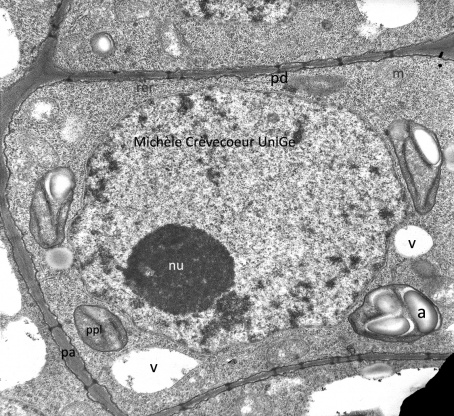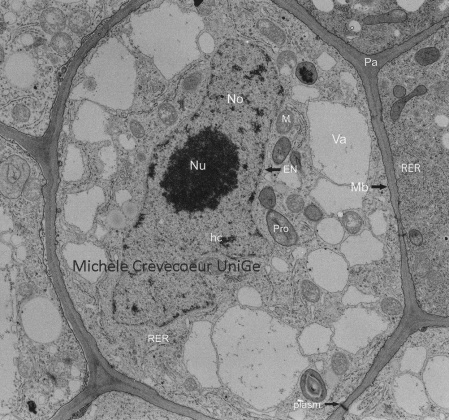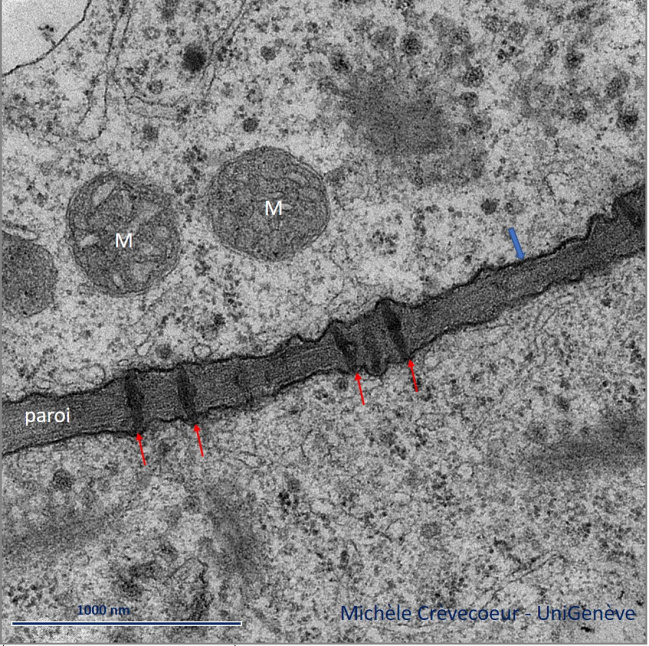Primary meristem: cellular characteristics
The cells are undifferentiated and are isodiametric, oval, rounded or rectangular and small (~10 µm x 10 µm) without intercellular spaces. They have only primary cell walls, thin and pectocellulosic with predominance of pectin. The cytoplasm is dense, with high density of ribosomes and vacuoles are absent or numerous and small. The plastids are proplastids that are poorly differentiated, and the nucleus is prominent (Nucleus/cytoplasm ratio high).
The cells show high capacity of divisions (numerous mitoses observed with appropriated cytological staining) and a very high metabolic activity.
Below: transmission electron micrographs illustrating some of their characteristics. On the left a cell of spinach, Spinacia oleracea, shoot meristem and on the right a cell of primary root meristem of maize, Zea mays.


Below: part of the primary cell wall between two adjacent cells with numerous plasmodesmata (red arrows). The plasma membrane appears as a thin electron dense line appressed against the cell wall (blue arrow). In the cytoplasm there are two mitochondria (M) with poorly developed
